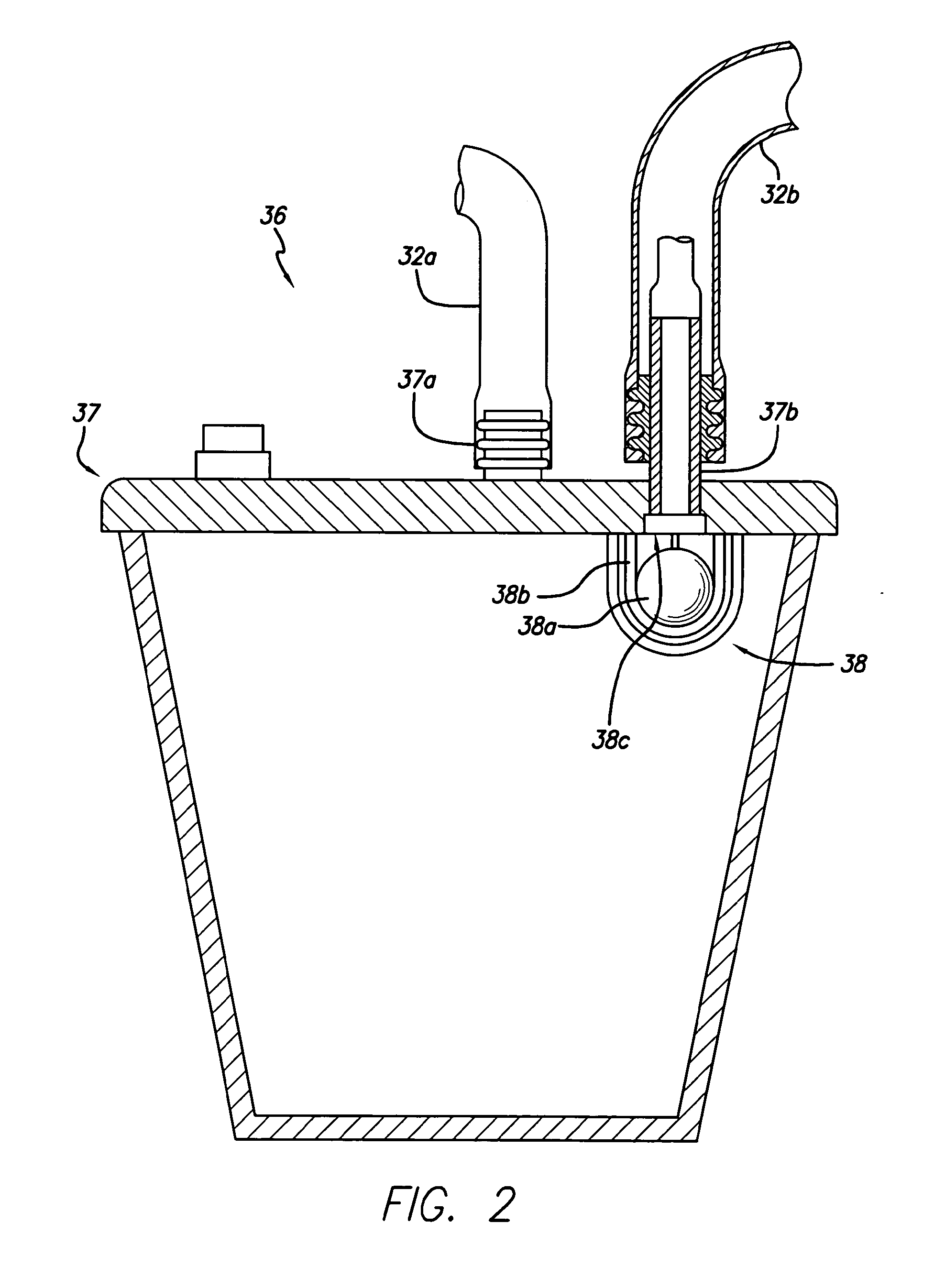Hypobaric chamber treatment system
a treatment system and hydrotherapy chamber technology, applied in the field of hydrotherapy chamber treatment system, can solve the problems of insufficient blood circulation through the venous system, insufficient venous insufficiency and stasis, radiation damage to lymphatics, etc., and achieve the effects of reducing pressure, less storage space, and efficient removal
- Summary
- Abstract
- Description
- Claims
- Application Information
AI Technical Summary
Benefits of technology
Problems solved by technology
Method used
Image
Examples
Embodiment Construction
[0030]In accordance with the present invention, an appliance and methods for using the appliance are provided for administering reduced pressure to all or a portion of an object. The description of the present invention set forth herein is directed primarily toward use of the appliance and methods for treatment of wounds and other infirmities and conditions on a portion of a patient's body. In these cases, an appliance is provided for treating a portion of the body of a patient by applying reduced pressure (i.e., pressure that is below ambient atmospheric pressure) to the portion of the body to be treated in a controlled manner for a selected time period in a manner that overcomes the disadvantages of currently existing apparatus. It is to be noted, however, that the appliance and methods may be used to provide reduced pressure treatment for other objects and purposes. For example, in some embodiments, the present invention may be used for reduced pressure treatment related to indus...
PUM
 Login to View More
Login to View More Abstract
Description
Claims
Application Information
 Login to View More
Login to View More - R&D
- Intellectual Property
- Life Sciences
- Materials
- Tech Scout
- Unparalleled Data Quality
- Higher Quality Content
- 60% Fewer Hallucinations
Browse by: Latest US Patents, China's latest patents, Technical Efficacy Thesaurus, Application Domain, Technology Topic, Popular Technical Reports.
© 2025 PatSnap. All rights reserved.Legal|Privacy policy|Modern Slavery Act Transparency Statement|Sitemap|About US| Contact US: help@patsnap.com



